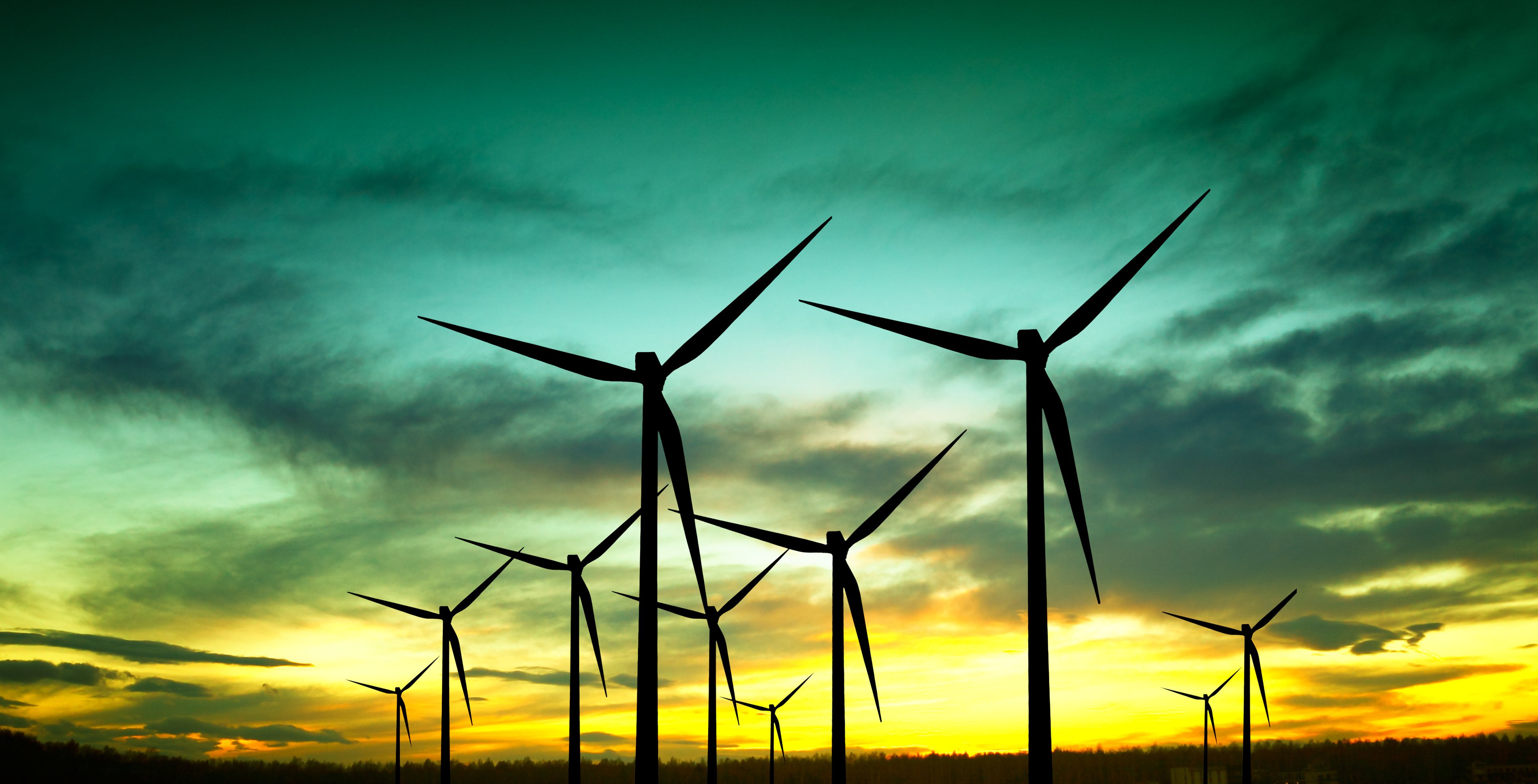UK Government funding helps tech sector boost wind energy
by Inline Policy on 02 Jul 2021
Governments across the world are working towards an energy transition for phasing out fossil fuels and meeting emissions targets. Sustainable energy technologies play an increasingly pivotal role in making this happen. We look at how the UK Government’s policies foster the development of technologies in the wind energy industry and how emerging technologies are driving efficiencies and reducing costs in this sector.
In November 2020, the UK Government set out its approach to achieve net zero carbon emissions in its Ten Point Plan. It includes the Government’s plan to quadruple offshore wind capacity by 2030 to 40GW and to invest £160 million in modern ports and manufacturing infrastructure so that every UK household could be powered by offshore wind by 2030.
Onshore wind is the dominant renewable energy in terms of UK generation capacity and is greater than offshore wind. However, according to BEIS, the gap is narrowing, and wind energy overall is becoming a crucial alternative to fossil fuel. In 2020, UK renewable energy generation increased by 11% (13.8 TWh), outstripping fossil fuel energy production for the first time.
Offshore wind generation accounted for most of that increase, growing substantially from 1.3GW in 2010 to 9.8GW in 2019. Offshore wind farms have accelerated their capacity from 0.8% in 2010 to 9.9% in 2019, generating as much electricity in 2019 as onshore farms. Offshore wind energy is crucial for a worldwide energy transition and the UK Government aims to make the UK the leader in this effort.
To achieve this goal, it has initiated various funding opportunities such as the Offshore wind manufacturing investment support scheme and the Floating Offshore Wind Demonstration Programme, part of the Government’ £1 billion Net Zero Innovation Portfolio.
Wind is inherently intermittent and there is still a need to develop systems to store and save excess generation for use during still periods. As part of the Net Zero Innovation Portfolio, £68 million will be invested for developing energy storage technologies. Moreover, in July 2020, the UK Government passed legislation that removes barriers for storage projects above 50 MW in England and 350 MW in Wales. All this indicates increasing awareness and interest from UK policymakers in the various technologies required to enhance renewable energy infrastructure.
The North Sea Transition Deal between the UK Government, trade unions, and the oil and gas industry aims to support the decarbonisation of the industry and emerging technologies such as those needed for offshore wind production. Part of the Government’s North Sea Transition Deal is the Dogger Bank wind farm off the coast of North Yorkshire. It will be the biggest and most innovative offshore wind farm in the world, with a capacity to power six million households. The public-private partnership offers the opportunity to develop new business models and create jobs that help local communities in the UK in line with a sustainable energy and economic transition.
Despite their advantages, wind farms cause problems in the maritime, aviation and defence sectors. The UK Government is funding technologies that limit the impact of turbines on radars and is calling for proposals to provide solutions to the problems that wind farms pose for UK air defence surveillance. A total of £3.6 million is available, each project receiving up to £600,000. In its first phase in 2020, the Government provided £2 million and £500,000 for each project. The increase in funding indicates the Government’s commitment to supporting innovative solutions to tackle problems caused by wind farm projects.
There is potential for the UK Government to work with technology companies that develop drones and robots to increase efficiency and reduce costs by allowing safer construction and maintenance at sea, spare-parts forecasting, and reducing the amount of time wind farms are offline. Ensuring offshore wind turbines produce energy at all times is one of the most pressing issues that advanced technologies aim to solve.
One example is the work of DeepMind, the Google-owned artificial intelligence (AI) firm. It collects data and uses AI to better forecast wind production, predict electricity supply and demand, thereby reducing operating costs. The result has been a 20% increase in revenue for wind farms.
UK start-up BladeBUG is developing advanced robots to help technicians inspect and repair wind turbine blades. The project has received two rounds of funding from Innovate UK, part of the public body UK Research and Innovation.
The drone company DJI Enterprise has been collaborating with the French start-up Sterblue to improve grid and wind turbine inspections. The start-up provides AI-driven software that automates data analysis of DJI’s automated drone programme. The two technology companies’ automated drones can independently fly and analyse wind turbines and farms to detect faults sooner and more accurately than other common methods. While manually controlled drones or helicopters are more difficult to operate, automated drones allow for a more detailed, thorough, and reliable analysis of wind turbines and farms without creating physical risks.
The Danish company Vestas Wind Systems and the Japanese company Mitsubishi Heavy Industries Ltd. are jointly developing a wind turbine platform to increase efficiency and reduce energy costs by using a central database where AI and other machine learning models evaluate whether turbines require active maintenance. Mitsubishi will closely work with the Japanese Government as the country seeks to make offshore wind energy a major source of energy by 2050.
As outlined above, advanced technologies, such as the Internet of Things (IoT), machine learning, and AI, can ensure wind turbines run with increased efficiency, and therefore generate cheaper and more reliable energy.
With advanced hard- and software technologies, wind energy capacity, efficiency, and workers’ safety can significantly increase while costs for operators and consumers decrease. On a wider scale, offshore wind farms also contribute to job creation, enabling the UK to lead in research and development of offshore wind-related technologies, and the establishment of new markets.
The Government has identified the need and provided funding for the development of offshore wind manufacturing, electricity storage, and solutions concerning its disruption with other sectors. It has demonstrated commitment by increasing financial support and regulatory approval year on year. The Government will likely provide further funding opportunities and accompanying regulations to foster required technology and surrounding infrastructure to accelerate wind energy capacity.
The UK’s current Presidency of the G7 Group and its hosting of COP26 in Glasgow offer opportunities to accelerate international cooperation on wind energy generation, especially regarding global supply chains, maritime rights, and providing a competitive environment for companies, such as the Danish company Ofsted which is crucial for building wind farms off Yorkshire’s coast.
As well as the Government’s efforts to make wind energy one of the UK’s primary energy sources, there is still potential for it to utilise emerging technologies and support start-ups such as BladeBUG to achieve its targets of quadrupling offshore wind capacity by 2030 and reach net zero by 2050.
Topics: Energy policy, Innovation policy, Regulation






Comments